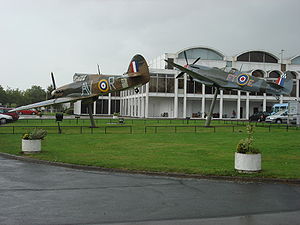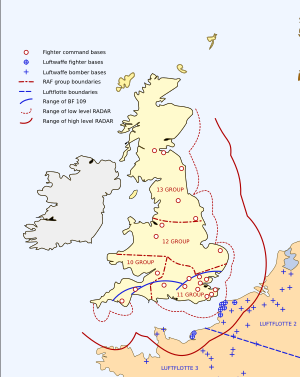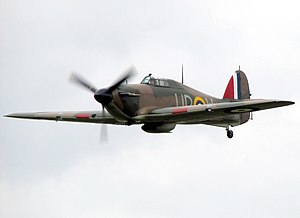 Image via Wikipedia
Image via Wikipedia"Weather: continuing poor
The only major engagement was an attack by 28 Me109s over the Straits of Dover which was met by Spitfires from 11 Group. The RAF lost 3 aircraft but failed to shoot down any of the enemy. Early that afternoon the coastguard station at St Margaret’s Bay was bombed and the Goodwin Lightship was sunk. 4 houses were destroyed during an afternoon attack on Gillingham.
266 Squadron Operational Record Book, 18 July
Average temperature, visibility very good. Flying 17 hours 25 minutes. B Flight at readiness. Ac Flight available. Practices included interception and attacks, target and cine gun practice. Spitfire aircraft N.3170 collided with tractor on aerodrome whilst taxiing and badly damaged. Pilot PO D.G. Ashton uninjured. Spitfire aircraft N.3244 force landed in a cornfield at Heckington, Lincs., owing to engine trouble. Pilot PO R.J.B. Roach uninjured."


























